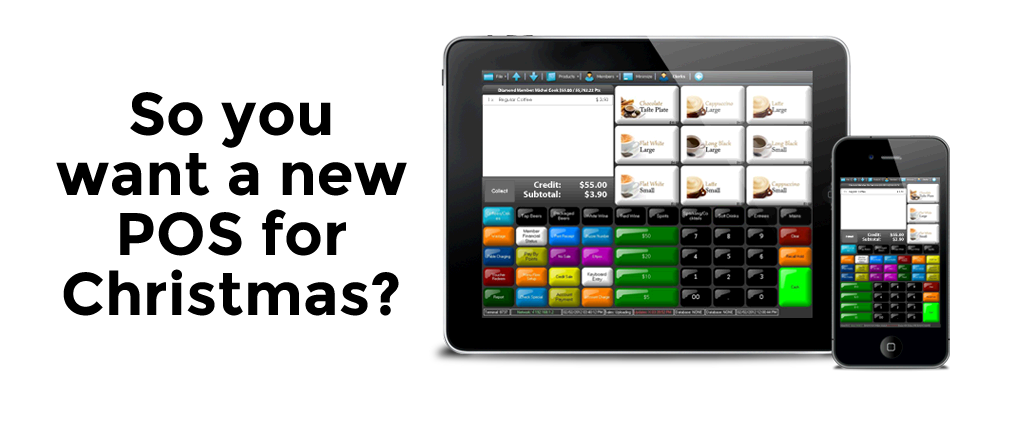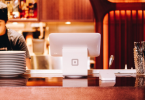
The big-brand restaurant chains have IT directors, restaurant technology specialists, and others who can investigate restaurant POS (point-of-sale) options. But not the smaller chains or independents.
We’ve asked Jonathon Sellers of Task Retail Technology to provide an objective framework for restaurant groups looking for a new restaurant POS option. This is the first in a series of articles addressing restaurant POS. Jonathon’s full bio is available at the bottom of this post.
So you’ve decided to make the big jump and find yourself a new POS provider, huh?
Great, the first question I’m going to ask is, “Why?” That’s rule #1 in thinking through a switch in POS providers.
Be clear about why you need a new POS system
I don’t ask this question to be snarky or to question your needs, rather it’s my attempt to be truly helpful. Plus if you truly are looking for a new POS then you probably have already benefited from a little wisdom via a quick Google search of multiple terms including the word POS.
So, why do you need a new POS? Take a few minutes to seriously reflect and write your reasons down.
Great, now you have a list of the many reasons why you need new a POS. Alright, I’m going to ask you to do one more thing. For each reason you wrote down, jot down a corresponding benefit statement.
What do you hope to get from changing POS providers?
Here, it’s easy:
- I want a new POS provider because I am tired of paying so much in hardware repairs bills.
- I want a new POS provider because I can’t connect any third-party services to my POS data.
- Obtaining new POS hardware would save my business money on unbudgeted repairs and that money could be put into a new freezer!
You get the idea.
One last exercise and I promise we’re done. I’ll spend the rest of the article imparting you with any wisdom I have to share.
Let’s focus on wants this time, rather than needs.
“But wait!” you say, “This doesn’t seem far off from the last activity you had me do! I don’t normally do this much work when reading a magazine article!”
It’s important to separate POS wants vs. needs
Forgive me. What I’m trying to do is get you to focus on your core business needs while also taking a look at your future opportunities. Both are critical to the health of your business, and to put it quite simply we can’t have wants if we haven’t satisfied our needs. Here’s another example:
- I want a new POS because I would like to allow for online ordering or from our forthcoming mobile apps.
- A new POS with these features would allow me to organically grow my business and tap new verticals.
- I need to deeper and more access to data that can drive my marketing programs.
Now that you have a firm grasp on what you want and need, let’s actually examine how a typical POS search goes into today’s market place. The acronym POS is vague and used in many different ways, but as most of us know it’s true meaning is “point of sale.”
Beginning the search for a new POS provider
If you’re just looking at your restaurant from the point-of-sale paradigm, you’re severely limiting your horizons and your restaurant’s potential. I would also recommend that we call it a “point of interaction” (POI) — and here’s why.
If you embark upon your search with a POI perspective you’ll not only look at the transactional aspect of your restaurant, but also the guest experience. It’s not just the ability to print a receipt, run a credit card, or properly account for cash that matters these days. Guests also demand to interact with your systems and expect them to open them up for their benefit rather than just your own. Your POS can be a part of that, not a hindrance.
Your guests want to place their orders online, feel like a valued guest, pay with mobile devices, complain about your mistakes vehemently, and access relative details about your restaurant with little to no effort on their part. Give this some thought and recalibrate your list of wants and needs if you see fit.
How to start evaluating POS providers
Now we know what you want, need and have a good perspective for the search. You’re now ready to Google, make calls, schedule appointments, download trial software and have people into our offices who’s sole purpose in life is to fill-up your voicemail and e-mail box for the next 36 months!
Where to start? Well there’s nothing wrong with starting with the usual suspects. The Big Three (NCR, Micros, and Xpient) are in business and became The Big Three because their offerings work for a large swath of the hospitality community. In fact, if you didn’t at least do some due diligence on the big three I would be concerned that your search didn’t cover all the angles.
Ok, let’s say you’ve now looked at The Big Three and were impressed by their large installation bases and impressive client list. But maybe you still don’t feel that you’ve exhausted your search options. You’ve been there, done that.
We live in a world with mobile devices, tablets, social media, the cloud and Big Data, and at this point you may be feeling the big boys are not the most innovative lot or that you could get lost in their vast ocean of customers, products and services. It’s possible.
Looking beyond the POS standard-bearers
So now, you extend your search to include some of the new players in the game. Let’s also take a look at some of those tablet based and cloud POS providers. Revel. Leapset. Shopkeep. Leaf.
There’s a lot to like about the newcomers to the restaurant POS world, though maybe you worry that these guys aren’t really big enough or long-term committed enough to your marketplace for you to feel comfortable putting you business in their hands. Then again, maybe not. They may be a perfect fit for you.
Either way, it’s time to narrow down the pool of potential candidates, and in comes your list of wants and needs. Let’s take that list and run it against each of the players you’ve reviewed thus far. Anyone who does not meet the core needs of your restaurant will probably not be a good business partner for you in the future. Strike them from the list.
You’ll determine who makes the cut via web searches, marketing materials, YouTube videos, word of mouth, trade-shows, and maybe a few web or phone interactions, but keep those as limited as possible. Don’t overwhelm yourself. There’s a point of diminishing returns.
Hopefully have a manageable list of restaurant POS candidates, and we are going to identify how many of our “wants” are serviceable by each company.
Lastly, let’s recompile your list in order of how many of your “wants” are serviceable, in order of most to least. At this point you should be feeling pretty good about your progress and a bit ready to cull the list a bit more so that this ends before you retire from the business. In order to accomplish this, take the top 5 companies from your list and move to the next step in the process.
Evaluating potential restaurant POS providers
Now prior to going to the next step I’m going to add some questions as further criteria for the next step of your search. These are additional examination points to ask the potential POS providers that may help to mitigate risk to your business or are current concerns in the market place:
- Are you PA-DSS compliant and listed on the PCI Council’s website as such?
- Do you provide any breach insurance or assume any liability in the event of a breach?
- What is your organizations EMV strategy and is the solution you are proposing today EMV capable.
- Is your organization able to provide me with a copy of your SOC Type 1 or SOC Type 2 audit? (Only important for larger organizations.)
Now let’s schedule a demo, download a trial version or send out RFI/RFP with the remaining players in our list and get this ball rolling. The point of this activity is to trust but verify that each vendor can execute on all your wants and needs. We want to see the wants and needs in action and have the ability to answer any questions that might come up as a result of the vetting process.
You also want to be diligent and update your list by striking anyone who could not demonstrate the execution of one of your needs, and/or reduce the score of companies that could not do the same with your wants. You may actually be surprised at how many of these companies’ marketing materials and sales pitches don’t match up to reality when it comes time for the demo.
Please notice at this point we haven’t asked how much the solution costs or discussed price at all up to this point. We’ve done this because we are trying to keep our eye on the ball and looking for the right POI for our business and will worry about cost later, and that step is next.
Well the time has come to start compiling data on what this is going to cost. Ask for a proposal from each vendor that includes the points below based on the wants and needs you’ve clarified. If you want to get a bit cheeky you can create your own template that they must fill out to provide you with pricing information which will really help you conduct an apples to apples comparison.
Digging into the real costs of restaurant POS
Now figure out the Total Cost of Ownership for each solution over a 5-year period of time and add this to your list.
- Software License Cost (non-reoccuring)
- Software as a Service (SaaS) License Fees (reoccuring)
- Hardware Lease Fees
- Hardware Purchase
- Installation
- Helpdesk Support Contract
- Onsite Support Contract
- Per Transaction
- Credit Card Processing Charges
- Term of the Contract
Now you should have a list of 5 or less companies you would feel comfortable doing business with for the next 5 years. This list should be ordered based on the wants and needs of your business but now you also have a view into how much it would cost to do business with each company.
You may need to strike some companies for cost alone or if they are one of your top choices you can always go back and ask for a concession. Asking for a concession is something you should not feel shy about and for the most part the vendor is expecting this behavior and if you fail to do such you are leaving money on the table.
This may sound horrible but its a simple truth of the business and you will find the more stores you control the easier it is to drive a decent concession.
Making a decision with data + the relationship
In a “binary” world you would probably select the company in first place, but with human interactions and the preponderance of choice, it’s rarely binary. Apply some emotional intelligence to the decision:
- Have I enjoyed doing business with this company to this point?
- Have they been responsive, and careful to know my needs?
- Have they been honest and transparent?
- Several people have told me that XYZ Company has been a great partner…
I would never ask you to eliminate your gut-feeling from the equation and can’t tell you how many times I wish I had followed my own gut instinct.
Well there you go! You have done a lot of work and are ready to make a major decision for your restaurant. The journey isn’t easy and sometimes if feels like you would have been better rewarded picking up a few shifts at a local unit, but your effort will pay off.
The typical restaurant group only makes this decision every 10 years…if that often. So make it with the best information possible.






